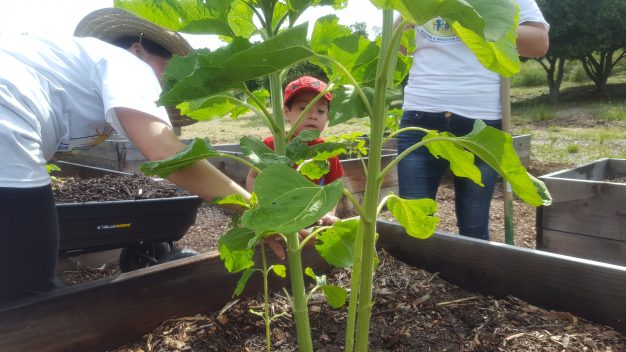
How children at urban schools can benefit from learning in nature
Children flourish when they learn in nature. It can improve their health, attention capacity and social skills. The enriching experience of outdoor learning can also lead to significant improvements in children’s mood and wellbeing, which last through the academic year.
However, teachers are not leading outdoor learning as much as they would like. In a 2018 survey conducted by Semble (formerly Project Dirt), a platform for community groups, 81 per cent of teachers in England said they wanted more time to take lessons outside.
In urban areas, providing outdoor teaching may be more challenging still due to inadequate access to parks and other outdoor spaces, says Marc Harris from Cardiff Metropolitan University
I carried out research to investigate how learning in nature can be delivered in urban schools and the reasons that deter schools from providing outdoor learning. I followed a 12-month pilot project called Growing Among Trees, which provided outdoor activities for urban schools in Islington, Greenwich and Reading. They included six primary schools, one secondary school and two special schools.
Over time, the sessions moved from being run by external providers to becoming teacher-led. I analysed notes from the sessions, collected feedback and held interviews and focus groups.
The activities included getting to know trees, making a group shelter, learning about habitats and tree planting. The students also took part in learning that linked to the national curriculum, such as identifying species and learning about the properties of different materials.
In many cases, the activities took place in the school grounds. The Growing Among Trees practitioners identified sources of nature at the schools, which could be playing fields, flower beds or even areas with pot plants or trees. If there were no green spaces within the school grounds, the activities took place in parks or other green spaces within walking distance.
I found that pupils and teachers were happy, highly engaged, creative and excited to spend more time in nature following these activities. One primary school teacher said:
[The pupils] were so focused, [displaying] fine motor skills, communication skills, using tools, sharing, collaborating and working together […] These activities are important for writing too. It gives them so many ideas, it helps them to be more creative. They were inspired by nature, by music, by the trees.
Another primary teacher commented:
This gives them something they cannot understand in the classroom; a responsibility for nature, a respect for nature, they value natural resources. […] In a short space of time you can see their whole sense of wellbeing is encouraged by being in a natural environment.
Overcoming barriers
However, my research identified three key reasons why schools might be reluctant to provide outdoor learning for pupils. Teachers and pupils struggled with the operational planning of delivering education outdoors – such as getting children dressed in wellies and waterproofs. Teachers were also less enthusiastic or perhaps apprehensive about teaching outdoors. Finally, teachers lacked confidence about replicating activities led by outside organisations to a high standard when conducting lessons alone. As one primary school teacher said:
I’ve always been really keen on outdoor education but I’ve become really nervous about how to actually implement it. I personally wasn’t confident in taking them outside.
As the weeks progressed, these barriers were overcome. The planning and preparation became more efficient, and teachers became more engaged and more confident about teaching outdoors. One teacher said:
I remember that chaotic first day of putting on their wellies and their waterproofs. But it was amazing to see that they actually did get so quick at it, they were so independent. And it makes me feel like it’s something that we can now do as teachers.
The phased approach, which saw teachers gradually take over the running of the sessions, helped them to gain confidence. I also found that delivering outdoor education as close to the school grounds as possible helped reduce teachers’ apprehension about the sessions.
For urban schools, giving children an experience of nature can be as simple as identifying the nature which exists within school grounds, taking ownership of this natural space, and caring for it.![]()
Marc Harris, Senior Researcher, Sociology and Philosophy of Sport, Cardiff Metropolitan University
This article is republished from The Conversation under a Creative Commons license. Read the original article.




